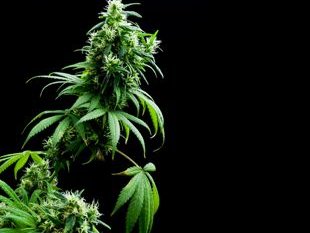Truth Seeker
New Member
As several states around the country wrestle with issues regarding marijuana legalization, reporter and writer Emily Brady's new book, "Humboldt: Life on America's Marijuana Frontier," could help educate Americans on what happens in a community based around marijuana.
Brady spent a year living in Humboldt County in Northern California, which has subsisted largely on the growing and sale of marijuana for decades. It helps fund its fire department and schools but also presents several problems as well.
"I found this community that was entirely economically dependent on marijuana and dug into the story of how that happens and the amazing things that come from it and the horrible things that come from it."
Although Brady says the situation in Humboldt County is unique – "It's kind of a lawless place ... They're the marijuana moonshiners and they've been doing this for decades," she says – she does have some thoughts about marijuana policy at a national, policy level.
She does think that marijuana legalization will eventually be the law of the land – "more and more states every year are adopting medical marijuana which I think softens the boogeyman" – and thinks that some of the problems present in Humboldt County need to be thought of through a different prism.
"When you read the book, some bad stuff happens in it. But I would like readers to question, does it happen because of marijuana? Or does it happen because it's illegal? ... A lot of people go to jail and we spend a lot of money on this and people still smoke pot. We have some of the strictest marijuana laws in the world and the highest use rate."
Brady also says that she'd like to see the national conversation about marijuana legalization include a discussion about how it is grown.
"Most of the focus is on regulating the sale and use of pot, which is understandable and important, but we also need to look at regulating how it's produced. It's currently unregulated agriculture. Because it was forbidden for so long, people began growing pot inside under lights. This wastes a ton of energy and leaves a huge carbon footprint."
Brady added that growing a plant outdoors is better for the environment, "if done in the right way."
"In Humboldt, there are small mom and pop farmers who grow organically in the sun and encourage others to do so. There are also people who grow outdoors who clear-cut hillsides, damn streams and use pesticides and rodenticides that harm wildlife and the environment. (And possibly the consumer.) As lawmakers hammer out what medical and recreational marijuana laws look like, pot smokers who care about such things should start thinking about and asking how their pot is grown, just like their tomatoes, and their free-range eggs, and their grass-fed beef."

News Hawk- Truth Seeker 420 MAGAZINE ®
Source: politico.com
Author: Patrick Gavin
Contact: Contact Us - POLITICO
Website: Book studies 'Marijuana's Frontier' - Patrick Gavin - POLITICO.com
Brady spent a year living in Humboldt County in Northern California, which has subsisted largely on the growing and sale of marijuana for decades. It helps fund its fire department and schools but also presents several problems as well.
"I found this community that was entirely economically dependent on marijuana and dug into the story of how that happens and the amazing things that come from it and the horrible things that come from it."
Although Brady says the situation in Humboldt County is unique – "It's kind of a lawless place ... They're the marijuana moonshiners and they've been doing this for decades," she says – she does have some thoughts about marijuana policy at a national, policy level.
She does think that marijuana legalization will eventually be the law of the land – "more and more states every year are adopting medical marijuana which I think softens the boogeyman" – and thinks that some of the problems present in Humboldt County need to be thought of through a different prism.
"When you read the book, some bad stuff happens in it. But I would like readers to question, does it happen because of marijuana? Or does it happen because it's illegal? ... A lot of people go to jail and we spend a lot of money on this and people still smoke pot. We have some of the strictest marijuana laws in the world and the highest use rate."
Brady also says that she'd like to see the national conversation about marijuana legalization include a discussion about how it is grown.
"Most of the focus is on regulating the sale and use of pot, which is understandable and important, but we also need to look at regulating how it's produced. It's currently unregulated agriculture. Because it was forbidden for so long, people began growing pot inside under lights. This wastes a ton of energy and leaves a huge carbon footprint."
Brady added that growing a plant outdoors is better for the environment, "if done in the right way."
"In Humboldt, there are small mom and pop farmers who grow organically in the sun and encourage others to do so. There are also people who grow outdoors who clear-cut hillsides, damn streams and use pesticides and rodenticides that harm wildlife and the environment. (And possibly the consumer.) As lawmakers hammer out what medical and recreational marijuana laws look like, pot smokers who care about such things should start thinking about and asking how their pot is grown, just like their tomatoes, and their free-range eggs, and their grass-fed beef."

News Hawk- Truth Seeker 420 MAGAZINE ®
Source: politico.com
Author: Patrick Gavin
Contact: Contact Us - POLITICO
Website: Book studies 'Marijuana's Frontier' - Patrick Gavin - POLITICO.com


